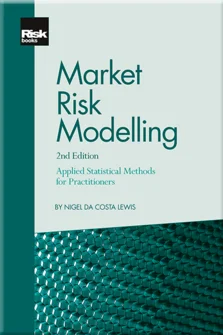Tools for Describing Risk Factors and Portfolios
Preface
Risk Modelling and its Myths
Mastering the R Statistical Package
Key Concepts on Probability
Tools for Describing Risk Factors and Portfolios
The Essentials of Hypothesis Testing for Risk Managers
Alternative Methods to Measure Correlation
A Primer On Maximum Likelihood Estimation
Regression in a Nutshell
Fitting Probability Distributions to Data
Practical Principal Components Analysis
Three Essential Models for Volatility
Random Numbers and Applied Simulation
Tail Risk Modelling
Conclusion to 'Market Risk Modelling (2nd edition)'
Vast amounts of data are available on all aspects of the financial markets and economy. However, raw data alone is not information! To compete successfully you must be able to extract useful insights from your data and use them to better manage risk and thereby enhance long-run returns. To extract information you must carefully and correctly analyse, present and interpret your data. Descriptive statistics is usually the first step in this process. This describes a broad range of methods used to summarise the essential characteristics of a sample of data. In this chapter, we will introduce a number of the core metrics used by statisticians. In describing risk factors and portfolios, they are primarily focused on central tendency, spread and shape.
CALCULATING RISK FACTOR RETURNS
Before the descriptive analysis of risk factors can begin, we need to ensure our data is in an appropriate format. For the most part, data are converted into rates of returns, which provide a measure of the size of an investment opportunity. There are two types of return often used in the statistical analysis of risk factor data. The first is the simple return; second is the log return. For time period t
Copyright Infopro Digital Limited. All rights reserved.
As outlined in our terms and conditions, https://www.infopro-digital.com/terms-and-conditions/subscriptions/ (point 2.4), printing is limited to a single copy.
If you would like to purchase additional rights please email info@risk.net
Copyright Infopro Digital Limited. All rights reserved.
You may share this content using our article tools. As outlined in our terms and conditions, https://www.infopro-digital.com/terms-and-conditions/subscriptions/ (clause 2.4), an Authorised User may only make one copy of the materials for their own personal use. You must also comply with the restrictions in clause 2.5.
If you would like to purchase additional rights please email info@risk.net











